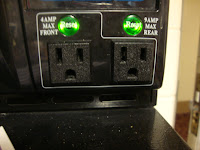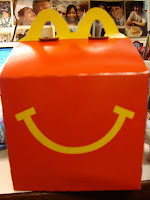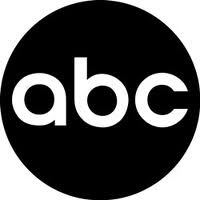Long Response
Krabat is an industrial-design firm who creates products for children who have physical disabilities due to illness. The company itself consists of a managing director, marketing director, two therapists and a designer to ensure that the children receive full attention for a better way of living.
Krabat was first founded by Tom-Arne Solhaug and Fredrik Brodtkorb after Solhaug found out his son had cerebral palsy. Being a father of a son with such illness, he often found himself irritated with the lack of adequate assistance for children with disabilities. He saw that the many technical devices that were in need to aid his son and other children with physical disabilities were non-existent. This was the starting point of Krabat; he decided he needed to do something about it himself.
“No children are alike. Some are a bit different. Krabat is like that.
Our products help children to participate, play, make progress and achieve.
And give them pride in being different.”
The above statement is Krabat’s motto; what they believe and strive in whenever they come up with a new design for their customers. The people at Krabat understand how hard it is to see their children feel uncomfortable at a very young age being in wheelchairs while other children look at them in a strange way. That is why Krabat makes every effort to make sure that they design their products in such a way that the child does not have to feel self-conscious about the way they look to others.
The two founders, Solhaug and Brotkorb, are also engineers so they oversee the functionality of the product and make sure that it lets the child do many activities that most children have no problem doing on a daily basis. Along with them are the two therapists, Kristin K. Jahren and Ann-Helen Gomnæs, who understand the impediments of having a physical disability and with that, they assist the engineers and designers in developing a product that will most benefit the children in every way possible. Last but not least, Andreas Langdalen Sørensen is the designer/technician who is in charge of designing the product and making sure it looks appealing to the child as if it were a toy instead of some dull mobility aid. As a team they make every effort to make sure that the end-product is something that the child will enjoy using and will assist him or her in doing things that are often limited to them.
Krabat is in a unique situation that lets them do as much as they can for these children. With the Norwegian health care system, expensive medical equipment are bought through the health care system and then are lent, sometimes permanently, to people who are in need. Thus the company itself does not have to worry about cutting their budget when developing a product for customers who may have a hard time affording them. Since they do not have to worry about the cost, they can concentrate on creating the best product that benefits the children.
Krabat has already had success in making sure that the child appreciates their product. Solhaug’s son, Kasper, who just turned eight, happens to adore his Pirate, which is a floating device that helps children swim independently in the water. When other children ask to borrow it, he simply answers no. Krabat’s product has helped children become more confident about themselves and raise his or her self-esteem when dealing with their disability which is ultimately the goal of this company.
I chose this company because I thought it was a very inspiring way of design being applied in the society. I hope the company will come up with more mobility aids in the near future so that more children can feel good about themselves J



Short Response-1
Paul Rand was a very famous graphic designer responsible for the logo designs of many successful companies such as IBM, UPS and ABC. Random fact: his real name is actually Peretz Rosenbaum but his name was changed to Paul Rand to hide his Jewish identity. “Paul” came from a nickname for Peretz and “Rand” came from his uncle.
He was born and raised in Brooklyn, New York. As a child, he had started to become interested in art and he often painted signs for his father’s grocery store and for school projects. Even though he enjoyed art, he was unable to convince his father about his passion for the subject. For that, his father made him attend academic school during the day while letting him attend classes at a Pratt Institute during the night. Even though he attended art school, people saw him as a “self-taught designer.”
His designing career began with a part-time job of graphic designs for magazines and newspapers. Eventually, his career had begun to pick up speed to the point where he became famous internationally. When he worked for Direction magazine, he did his job for no pay because they let him do whatever he wanted artistically.
His IBM logo in 1956 was ultimately the highlight of his career bringing him attention from many people. Mark Favermann describes Rand’s IBM logo as “was not just an identity but a basic design philosophy that permeated corporate consciousness and public awareness.” From there, he established his status as one of, if not, the greatest graphic designer in history.
Paul Rand’s designs intrigue me because they are all very simple but they still carry meaning to it. For example, the former UPS logo has a picture of a present on top of what seems to look like a badge. From my interpretation, it seems like the logo is saying “we will deliver your package with care and diligence.” From his works, I learned that pictures can sometimes carry so much more meaning than just words. I also like his modernish style and that is something I am interested in.

Short Response-2
Karim Rashid is a very prominent designer whose work ranges from furniture to fashion to packaging and so much more. Statistically, he has “over 3000 designs in production, over 300 awards and working in over 35 countries attest to Karim's legend of design.”
He has had a definite passion for design which led him to study in Canada and Italy for his graduate design studies. Some of the companies he has worked for in the past are: Tommy Hilfiger, Citibank and Sony. He often visits many schools as a guest speaker to share his ideas and concept about art and design. (Random fact: his work has been exhibited at our very own Wexner Center of OSU in the past).
There is something called the “Karimanifesto” which is Rashid’s view on art and design. He believes that “Design is about the betterment of our lives poetically, aesthetically, experientially, sensorially, and emotionally. My real desire is to see people live in the modus of our time, to participate in the contemporary world, and to release themselves from nostalgia, antiquated traditions, old rituals, kitsch and the meaningless. We should be conscious and attune with this world in this moment. If human nature is to live in the past - to change the world is to change human nature.” From Googling images of his work, I feel like I can see his Karimanifesto being formulated into his work because many of his work seem futuristic; definitely the opposite of traditional (which is why I chose to do my third research on him). I really like his way of design because they are very fun to look at. Even a simple chair looks so high-fashion and it makes me imagine what the world may look like in the future. By designing products in such a way, it seems like he is trying to push people to think in a new way instead of being tied down to old, traditional ideals.




Works Cited
"Biography." Karim Rashid. Karim Rashid, n.d. Web. 11 Apr 2011. <http://www.karimrashid.com/biography_fr.html>.
"Business Idea." Krabat. Krabat, n.d. Web. 11 Apr 2011. <http://www.krabat.com/krabat_forretningside.htm>.
"karim rashid." designboom. designboom, Feb. 2002. Web. 11 Apr 2011. <http://www.designboom.com/eng/interview/rashid.html>.
"Karimanifesto." Karim Rashid. Karim Rashid, n.d. Web. 11 Apr 2011. <http://www.karimrashid.com/biography_fr.html>.
"Paul Rand: A Brief Biography." Paul-Rand.com. N.p., 2007 April 11. Web. 11 Apr 2011. <http://www.paul-rand.com/site/biography/>.
"Product Philosophy." Krabat. Krabat, n.d. Web. 11 Apr 2011. <http://www.krabat.com/krabat_produktfilosofi.htm>.
Shonquis Moreno, Shonquis. "Blazing Saddles."Metropolis 15 March 2011: n. pag. Web. 11 Apr 2011. <http://www.metropolismag.com/story/20110315/blazing-saddles>.






















































